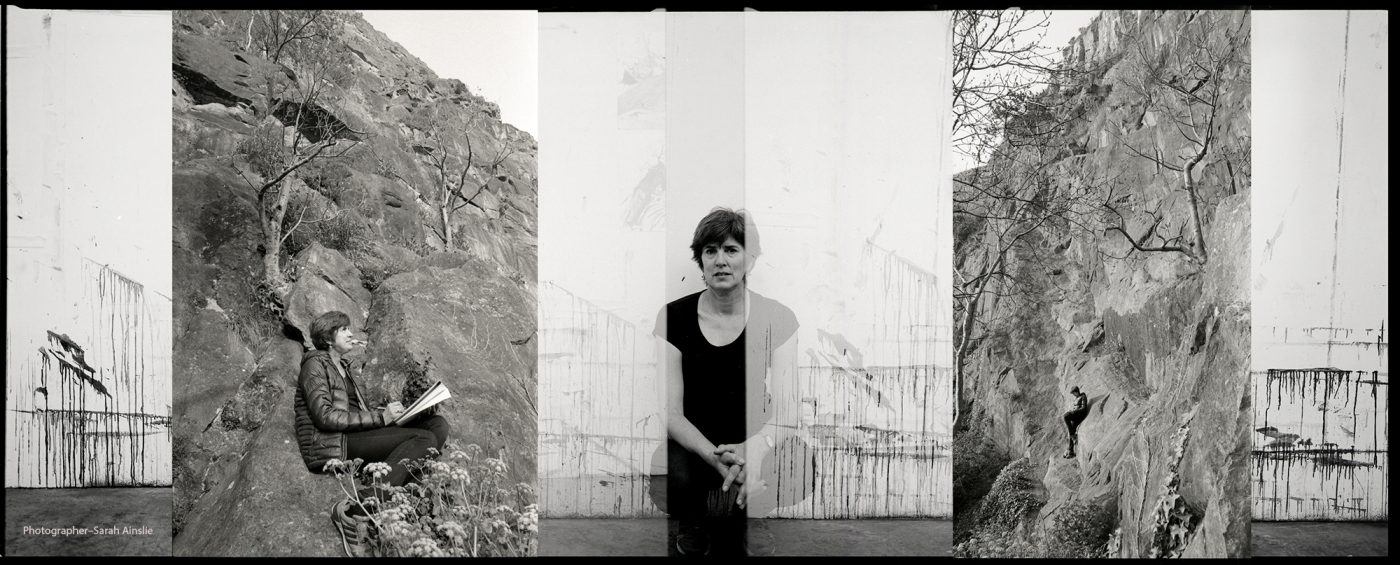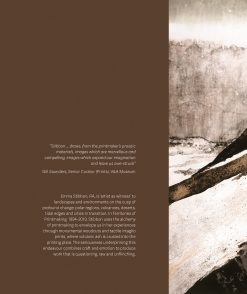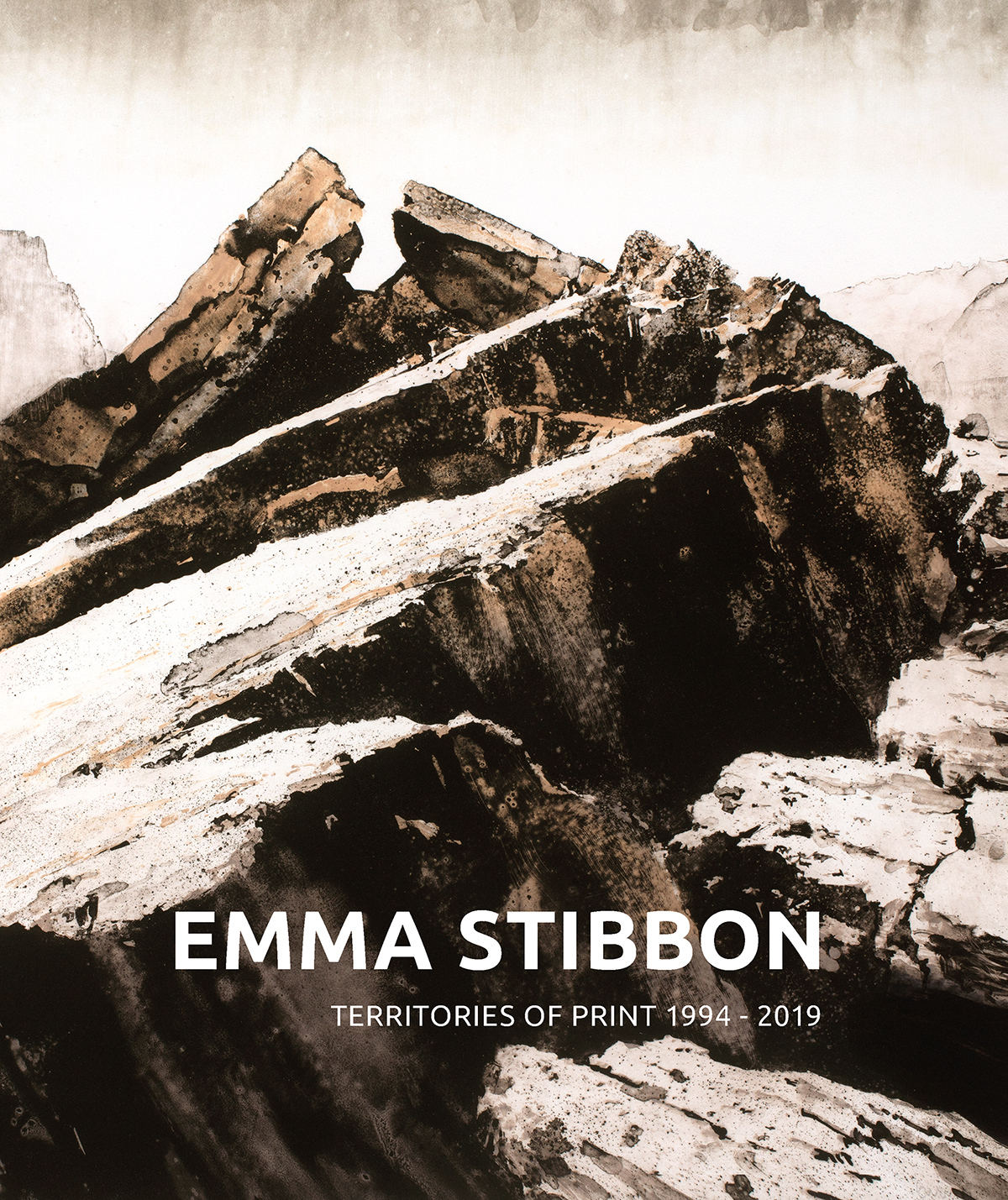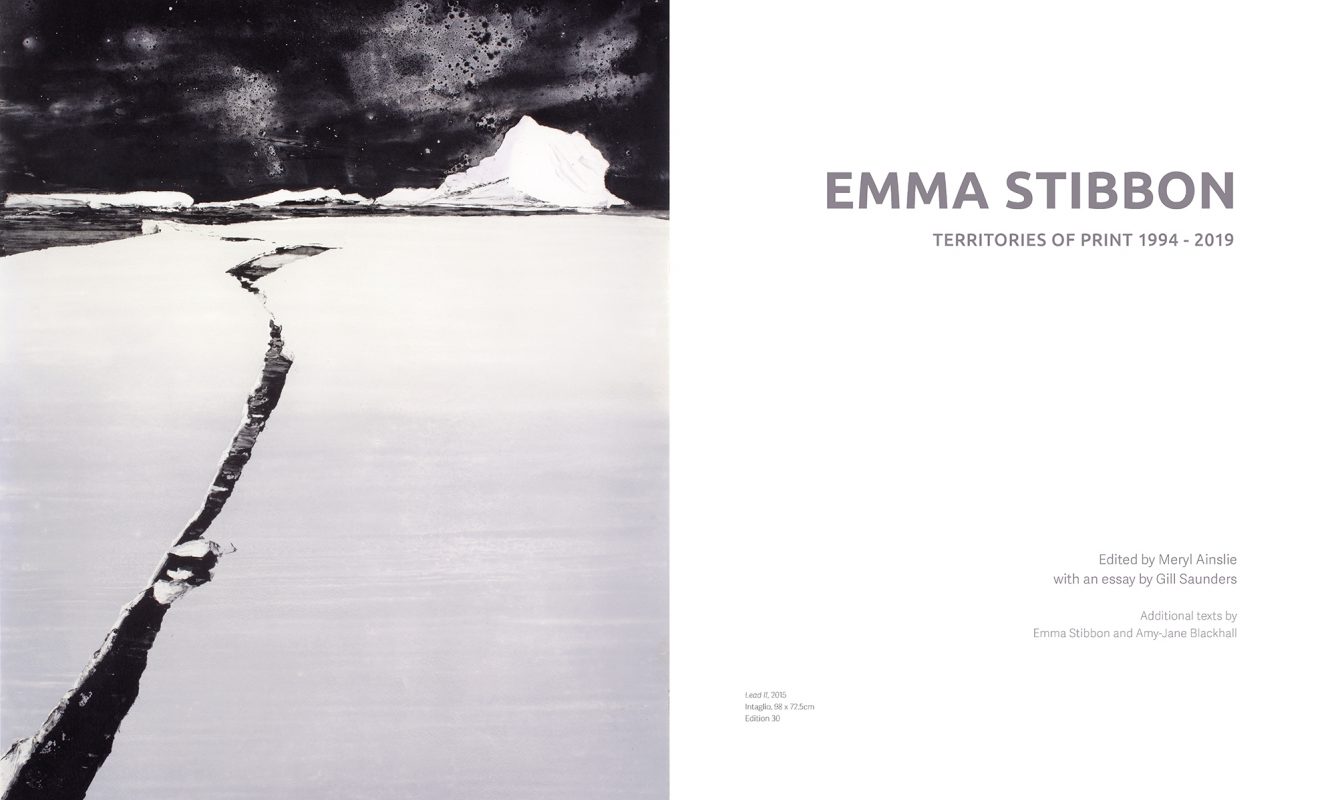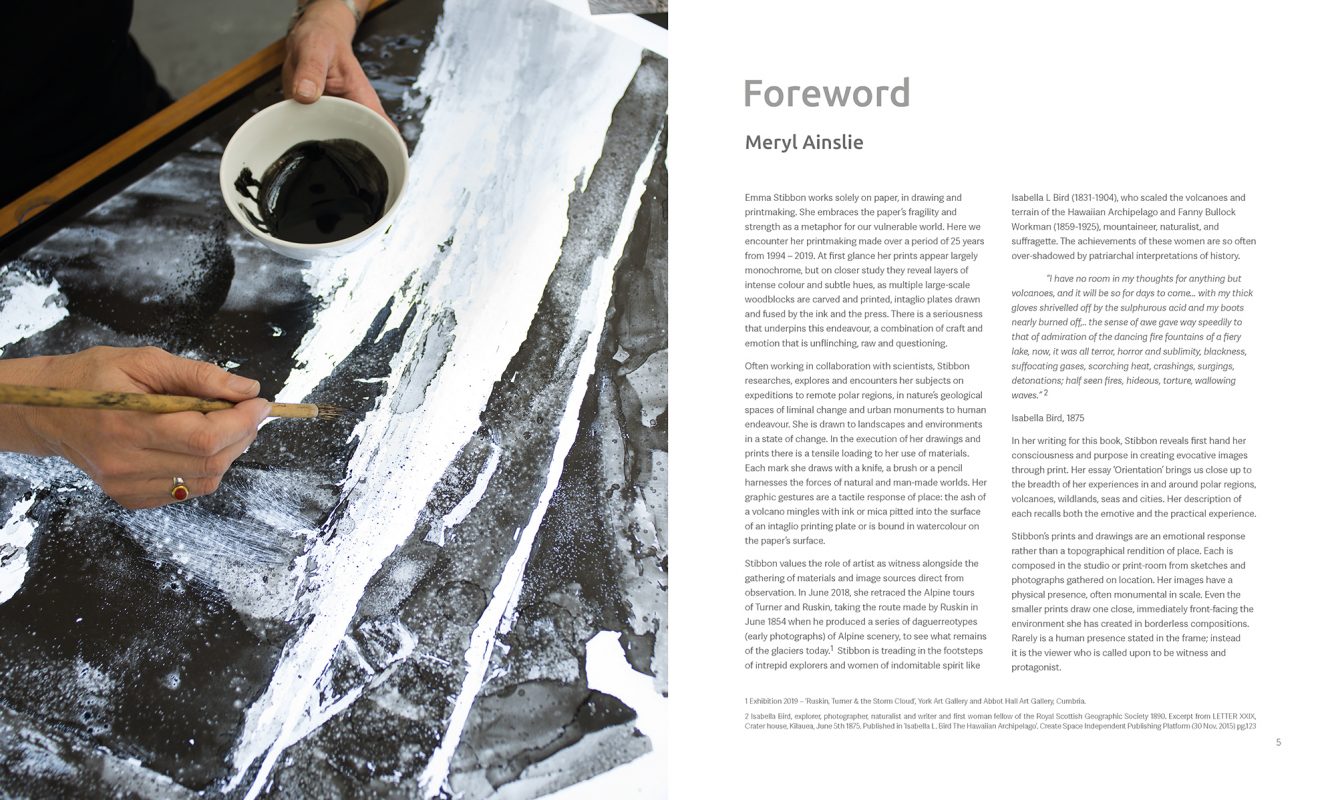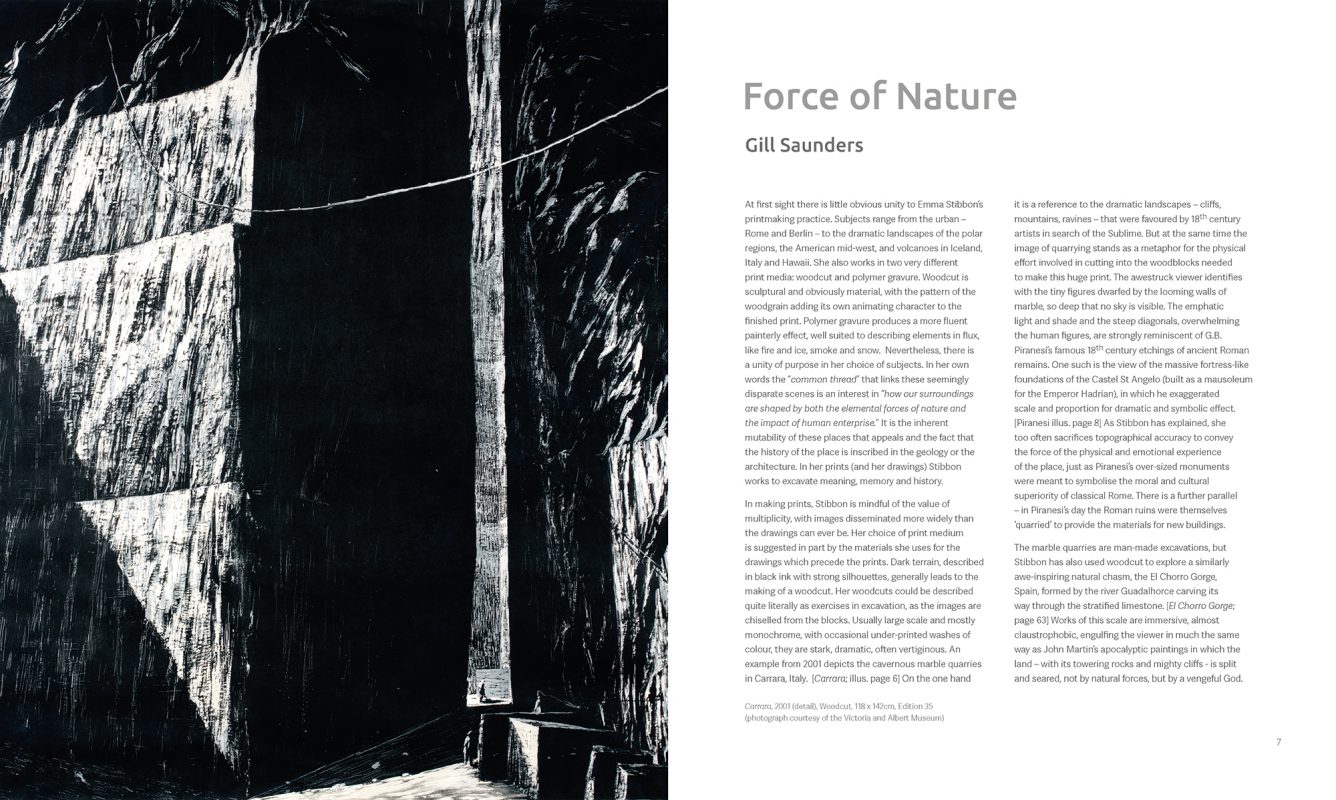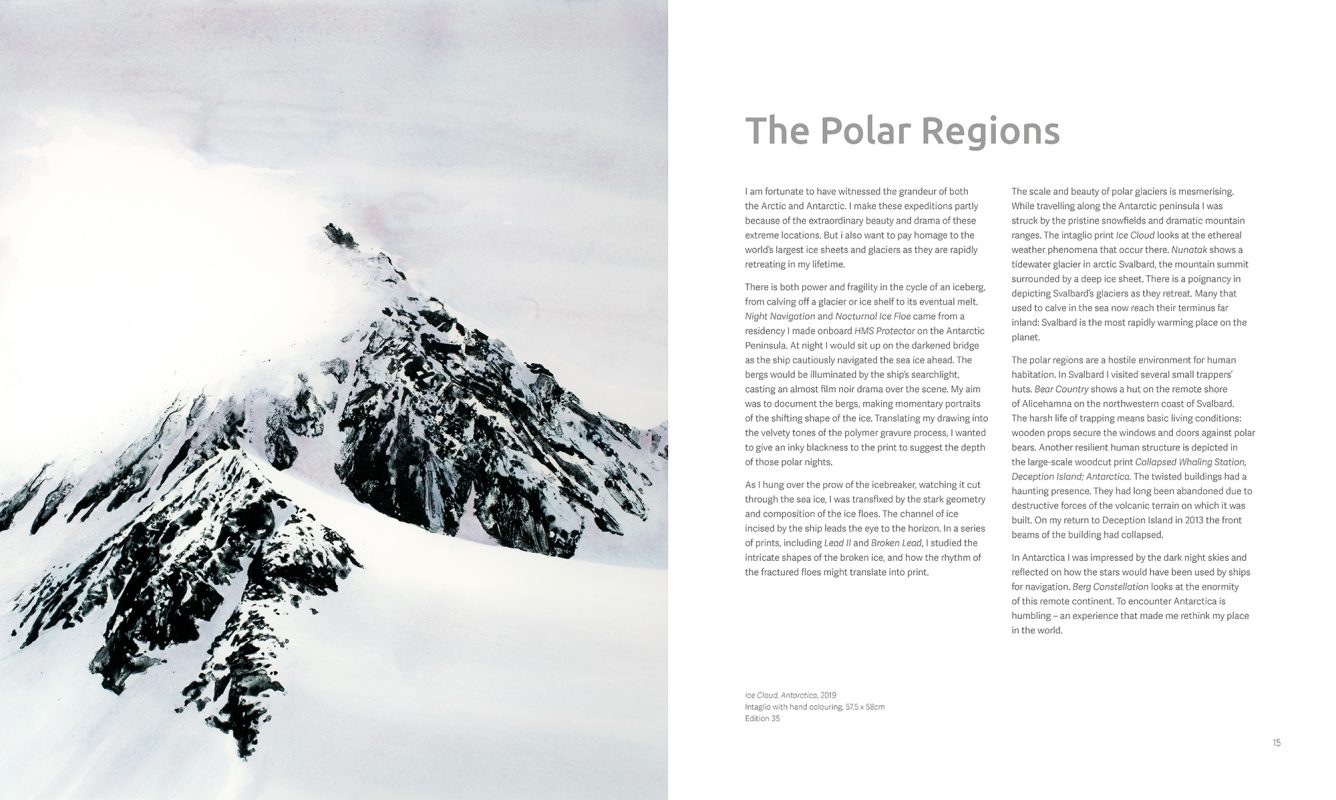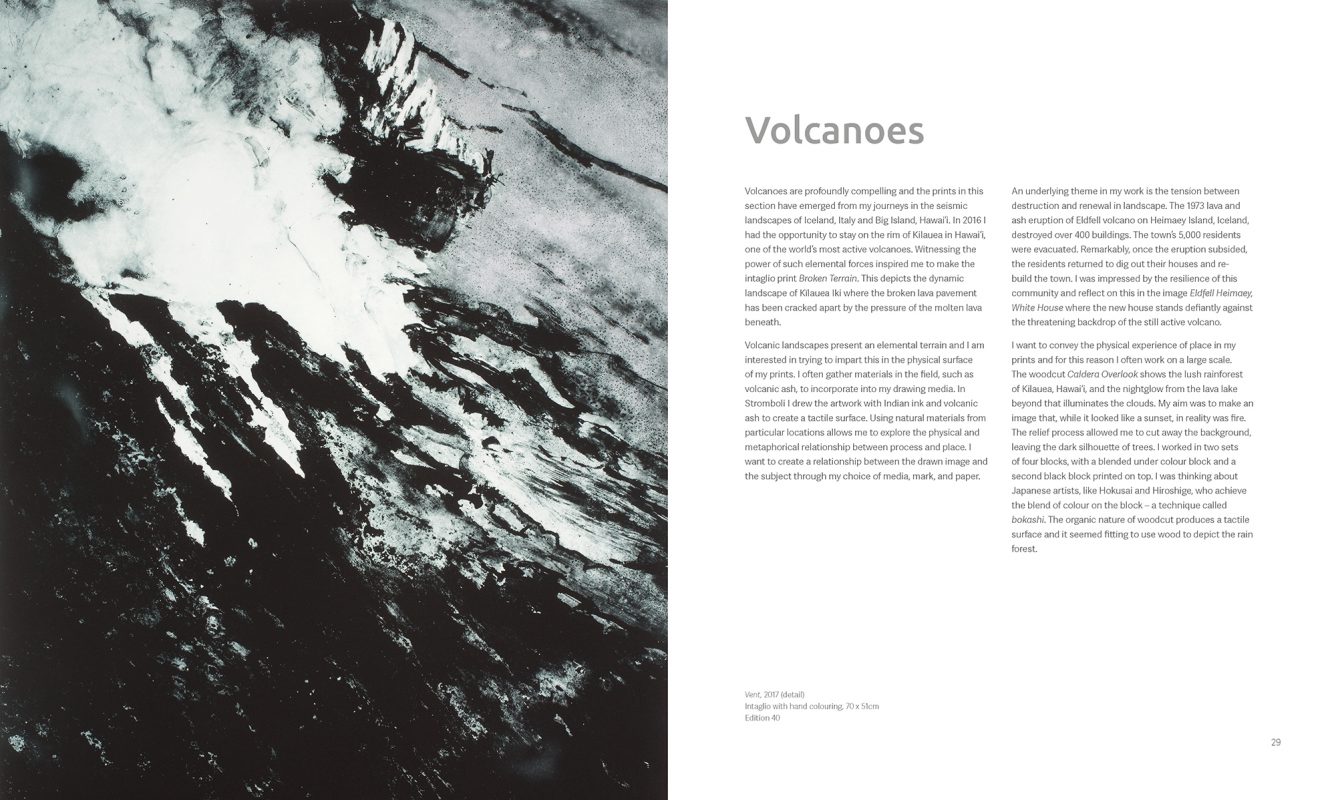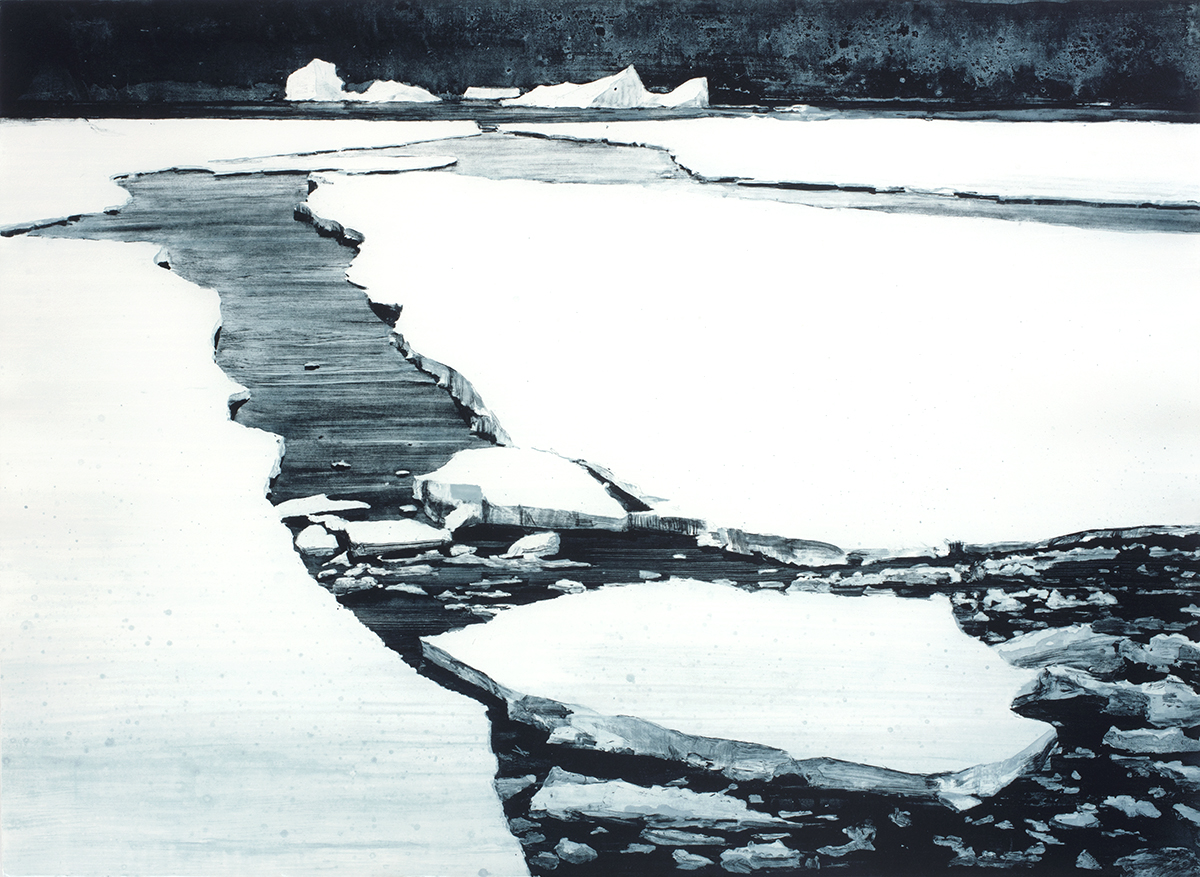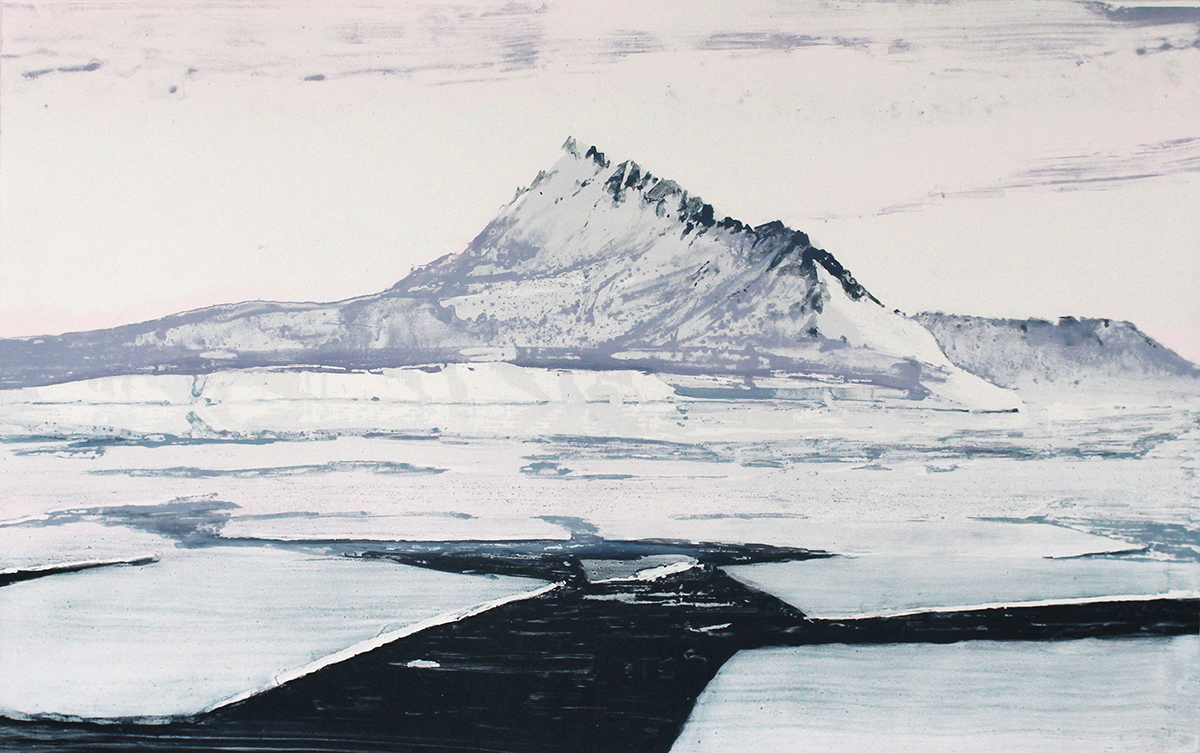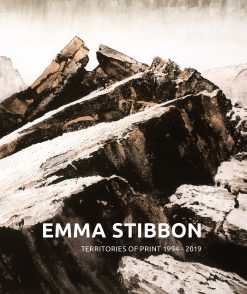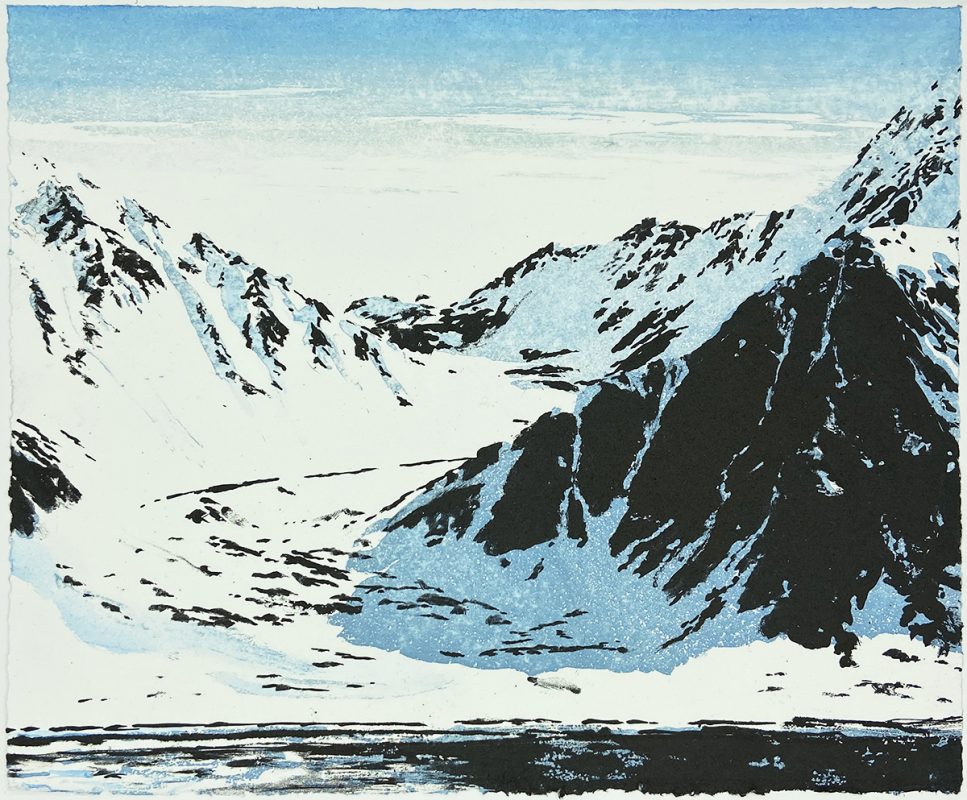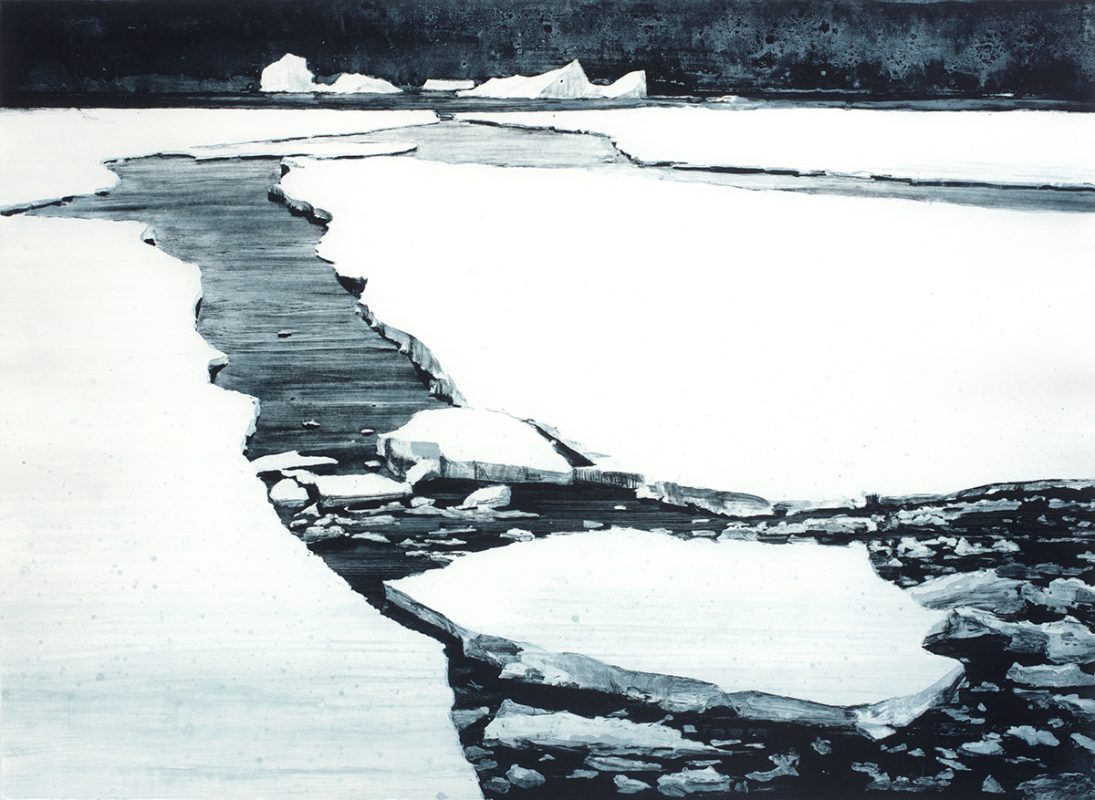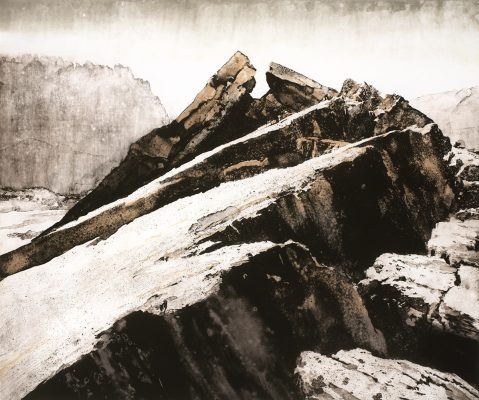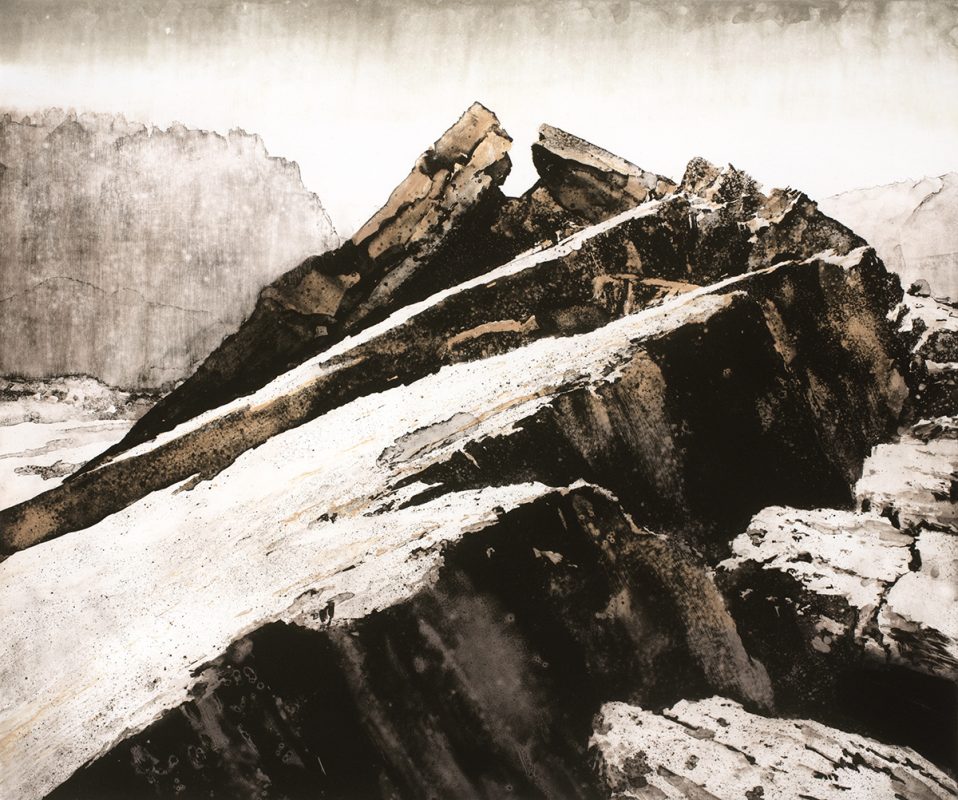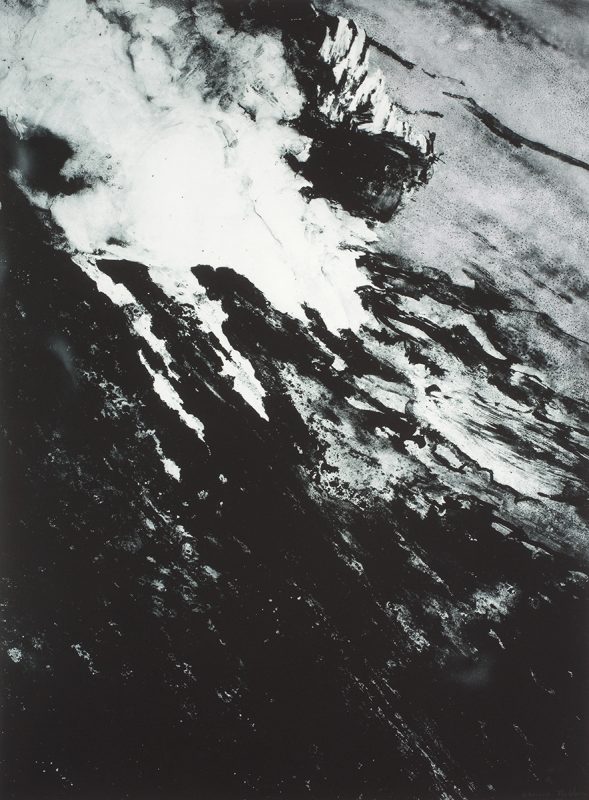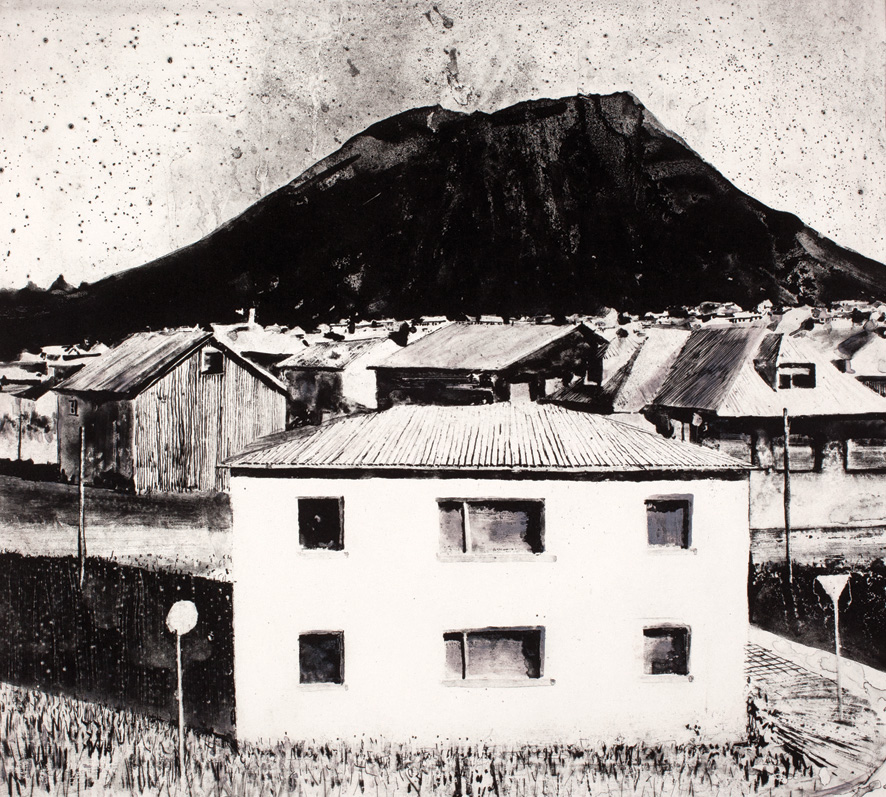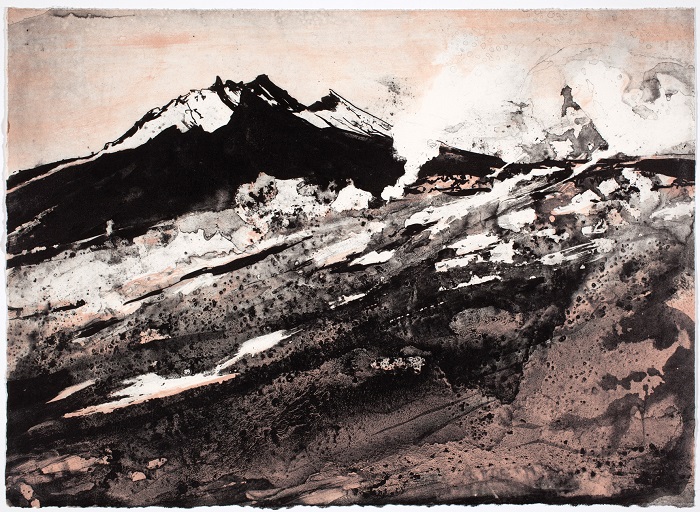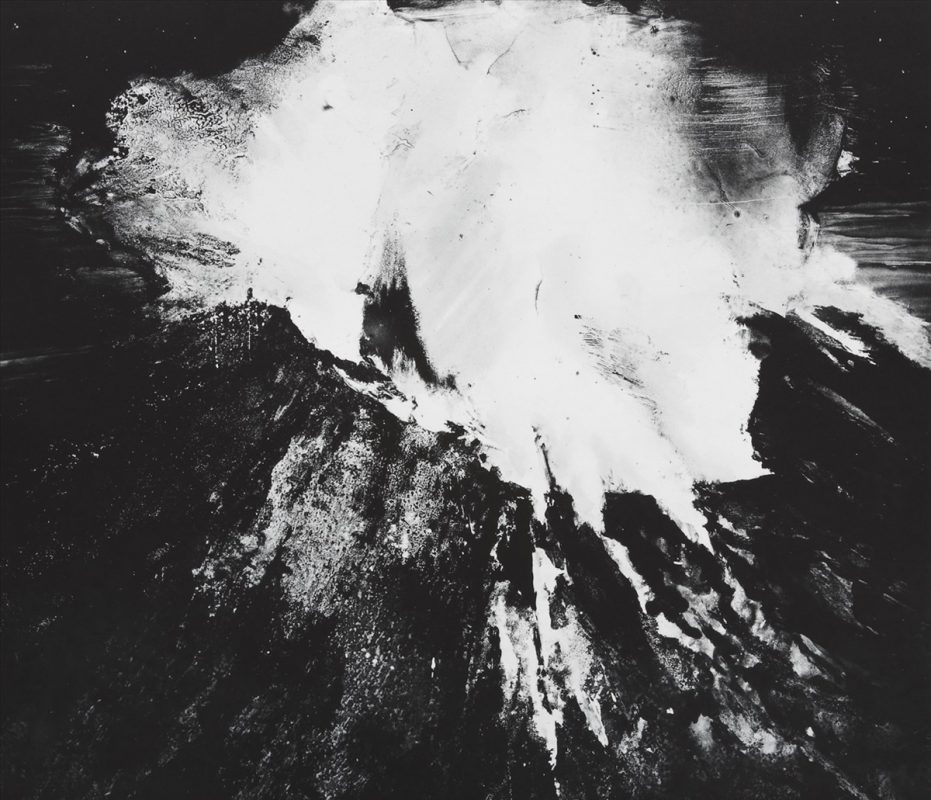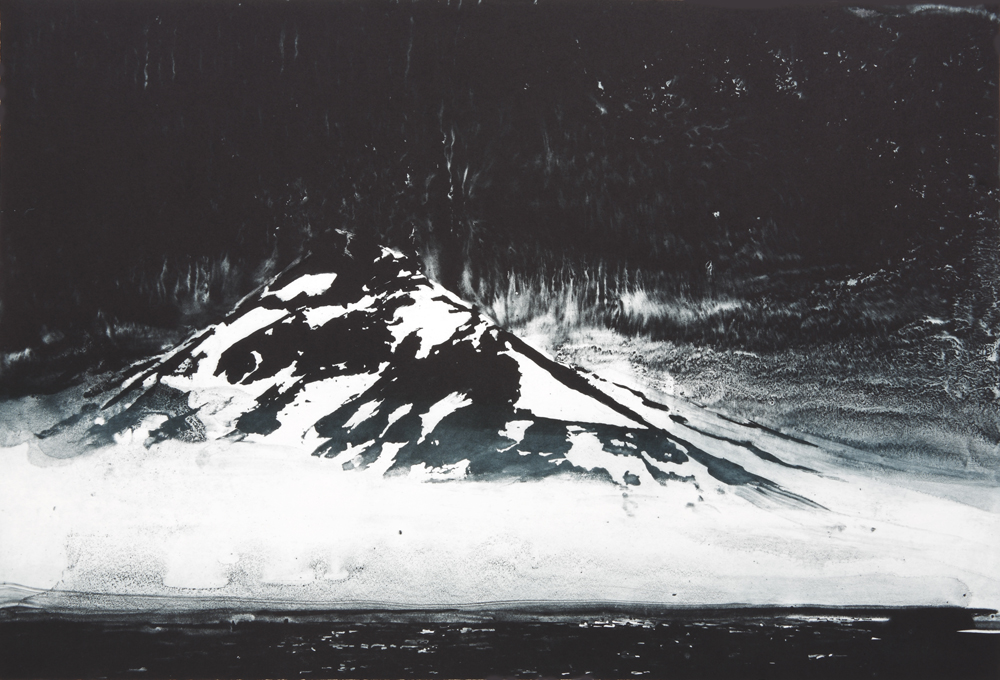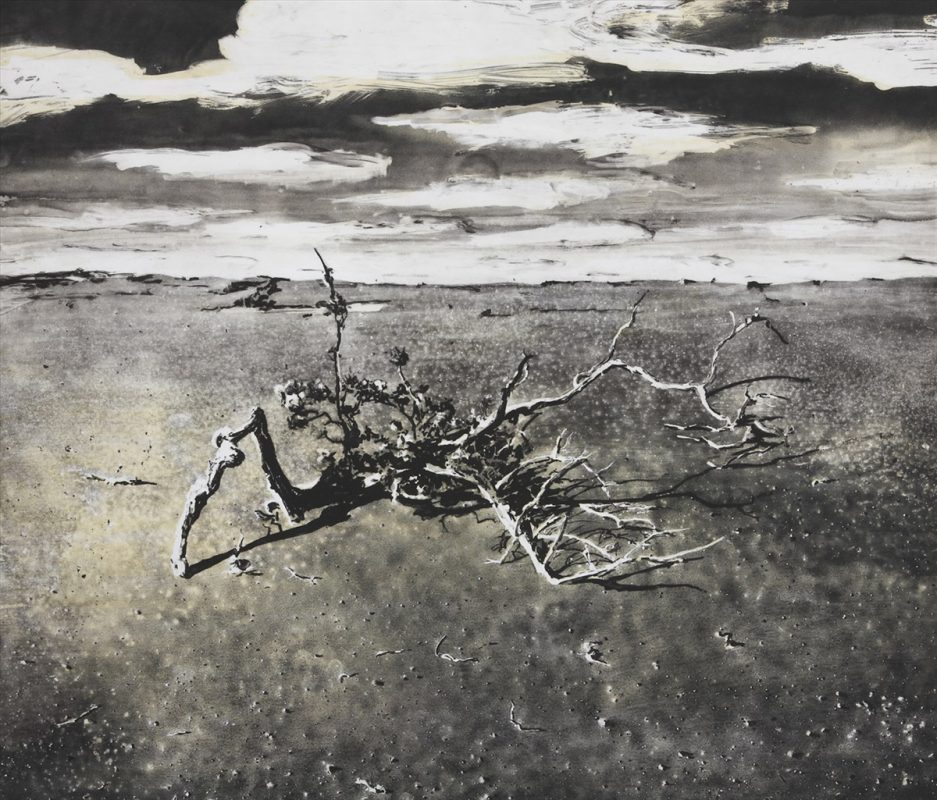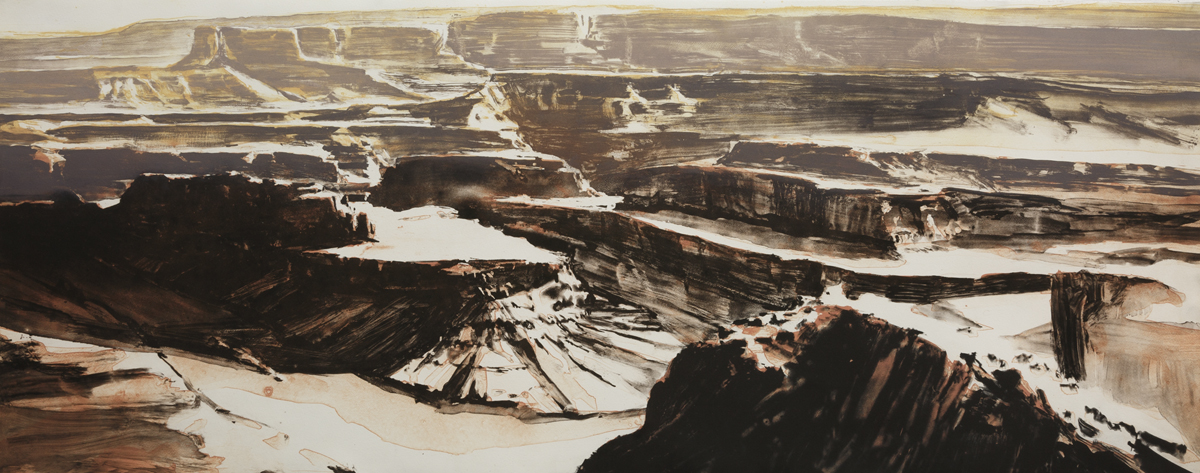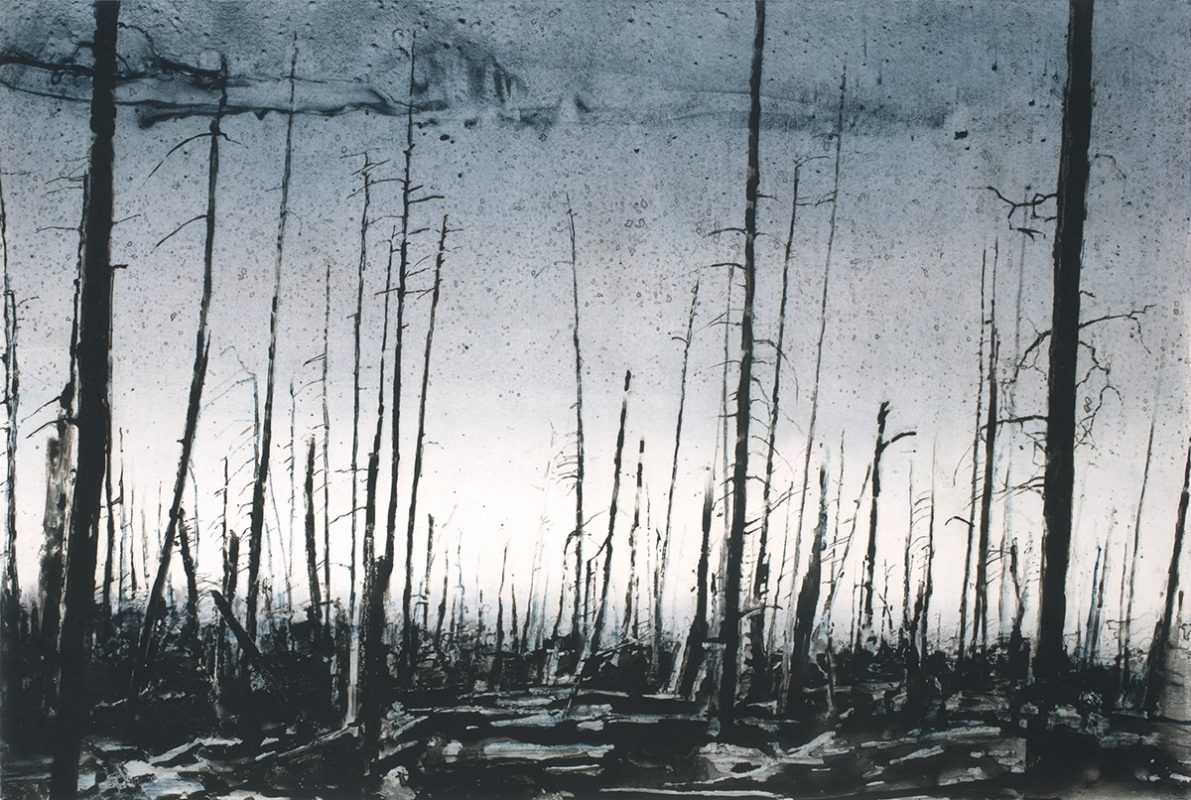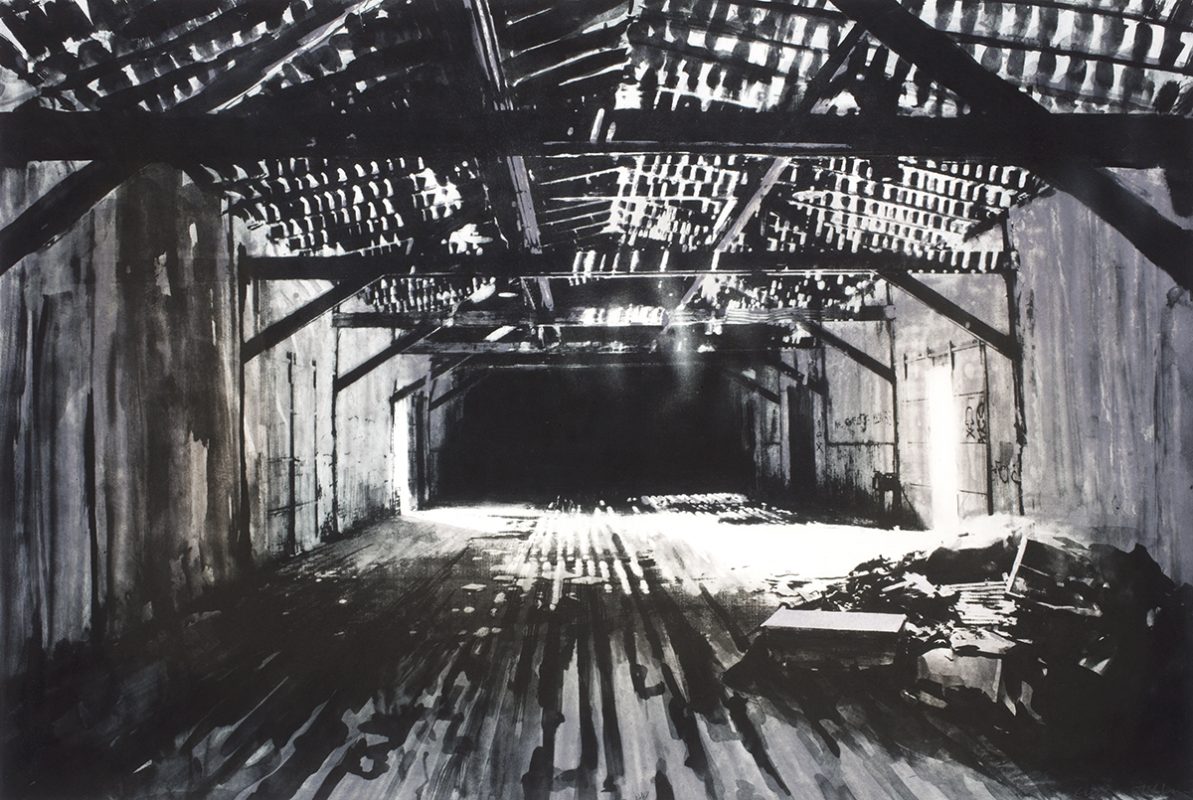News
Emma Stibbon RA – Prints and Book Publication
Emma Stibbon RA is a printmaker and ‘artist as witness’ to our landscape and environments on the cusp of change.
“As I hung over the prow of the icebreaker, watching it cut through the sea ice, I was transfixed by the stark geometry and composition of the ice floes. The channels of ice incised by the ship lead the eye to the horizon.” Emma Stibbon
In a new book Emma Stibbon Territories of Print, 1994 – 2019, documents Stibbon’s integral engagement with the printmaking process over 25 years. This is a comprehensive profile of the artist, her thoughts and prints from drawing in the field to making in the studio. It includes a luminary essay ‘Force of Nature’ by Gill Saunders, Senior curator (prints) at the V&A museum.
Emma Stibbon is ‘artist as witness’ to our landscape and environment on the cusp of change: polar regions; volcanoes; deserts; coastal and urban. 104 page, fully illustrated hardback book.
Here is a selected glimpse into this beautiful hardback book published by Rabley Drawing Centre and the artist.
Force of Nature by Gill Saunders
“Stibbon… draws from the printmaker’s prosaic materials images which are marvellous and compelling, images which expand our imagination and leave us awe-struck”
At first sight there is little obvious unity to Emma Stibbon’s printmaking practice. Subjects range from the urban – Rome and Berlin – to the dramatic landscapes of the polar regions, the American mid-west, and volcanoes in Iceland, Italy and Hawaii. She also works in two very different print media: woodcut and polymer gravure. Woodcut is sculptural and obviously material, with the pattern of the wood-grain adding its own animating character to the finished print. Polymer gravure produces a more fluent painterly effect, well suited to describing elements in flux, like fire and ice, smoke and snow. Nevertheless, there is a unity of purpose in her choice of subjects. In her own words the “common thread” that links these seemingly disparate scenes is an interest in “how our surroundings are shaped by both the elemental forces of nature and the impact of human enterprise.” It is the inherent mutability of these places that appeals and the fact that the history of the place is inscribed in the geology or the architecture. In her prints (and her drawings) Stibbon works to excavate meaning, memory and history… pg7
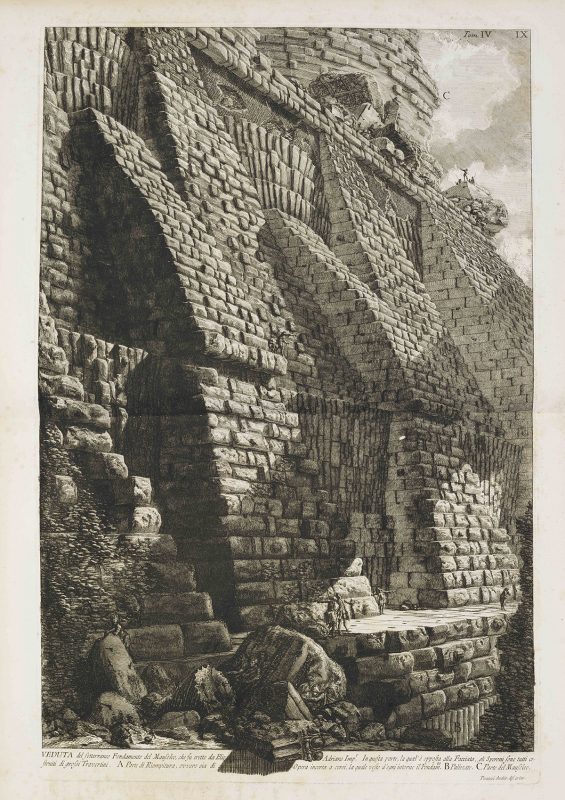
Image credit – Plate 9 from Le Antichita Romane di Giambatista Piranesi, Vol. 4 c1750. Published in Paris by Tessier, 1803–1807. Reproduced courtesy of the Victoria and Albert Museum.
POLAR REGIONS
…Nunatak shows a tidewater glacier in arctic Svalbard, the mountain summit surrounded by a deep ice sheet. There is a poignancy in depicting Svalbard’s glaciers as they retreat.(Haakon VII) Many that used to calve in the sea now reach their terminus far inland: Svalbard is the most rapidly warming place on the planet.
The polar regions are a hostile environment for human habitation. In Svalbard I visited several small trappers’ huts. Bear Country shows a hut on the remote shore of Alicehamna on the northwestern coast of Svalbard. The harsh life of trapping means basic living conditions: wooden props secure the windows and doors against polar bears. To encounter Antarctica (Broken Lead) is humbling – an experience that made me rethink my place in the world. ES, TOP, Polar Regions pg.15
VOLCANOES
Volcanoes are profoundly compelling and the prints in this section have emerged from my journeys in the seismic landscapes of Iceland, (Blast, Eldfell Heimaey,
Shattered Cone)Italy and Big Island, Hawai‘i. In 2016 I had the opportunity to live on the rim of Kilauea in Hawai‘i, one of the world’s most active volcanoes. Witnessing the power of such elemental forces inspired me to make the intaglio print Broken Terrain. This depicts the dynamic landscape of Kīlauea Iki where the broken lava pavement has been cracked apart by the pressure of the molten lava beneath. (Vent, Crater)
Volcanic landscapes present an elemental terrain and I am interested in trying to impart this in the physical surface of my prints. I often gather materials in the field, such as volcanic ash, to incorporate into my drawing media. ES. TOP, Volcanoes, Pg29.
SEA TIDAL EDGE
Travelling on the southern coast of Iceland I was struck by the powerful effects of sea erosion on the volcanic geology and the formations that it creates. The polymer gravure print Reynisdrangar depicts the basalt sea stacks of Vík í Mýrdal. On the beach I gathered black volcanic sand and added it to my drawing media to convey the sense of physical terrain in the image.
… Whilst sailing to Antarctica the view from the ship became an important part of the work, and I drew in my sketchbook from the deck. On leaving the Beagle Channel from Ushuaia, Tierra del Fuego the ship passed an abandoned wreck prompting me to make Wreck on a circular shaped plate to suggest a porthole. The prow of the ship jutting just above the sea was one of the last markers of human existence before we sailed south to Antarctica. ES, TOP, Sea, Tidal Edge, pg41
WILDLANDS
..Stibbon’s prints and drawings bear witness to this raw power of nature and its capacity to reshape the landscape. In Utah, she has explored the bleak territory of Dead Horse Point, a place of extreme temperatures and scarce water, with an extraordinary geological history laid bare by centuries of erosion and volcanic activity. In an otherwise starkly inhospitable landscape close to the North Rim of the Grand Canyon, she chose to picture the prosaic evidence of human intervention with a gas station sign. (Lotto Guns Ammo) It offers, with a bleak poetic humour, the banal necessities of modern life – ‘Lotto, guns, ammo, beer and t-shirts’ – and, as a PS for those whose vehicles fail them in this ‘middle of nowhere’ place, a tow-truck service. (Gill Saunders ,TOP, ‘Force of Nature’ pg.9)
Medium: Intaglio
Size: 51x82.5cm
Edition of 35
Published 2018
CITIES IN TRANSITION
Leipzig is another German city that shows how the built legacies of past histories inform the present. In 2005, whilst on a residency at the Baumwollspinnneriei, I explored the remnants of factories and abandoned buildings from the former DDR. Rail Shed, Leipzig looks at an empty rail shed that terminates a rail network once busy with manufactured freight. ES, TOP, Cities in Transition, pg.67
THE STUDIO
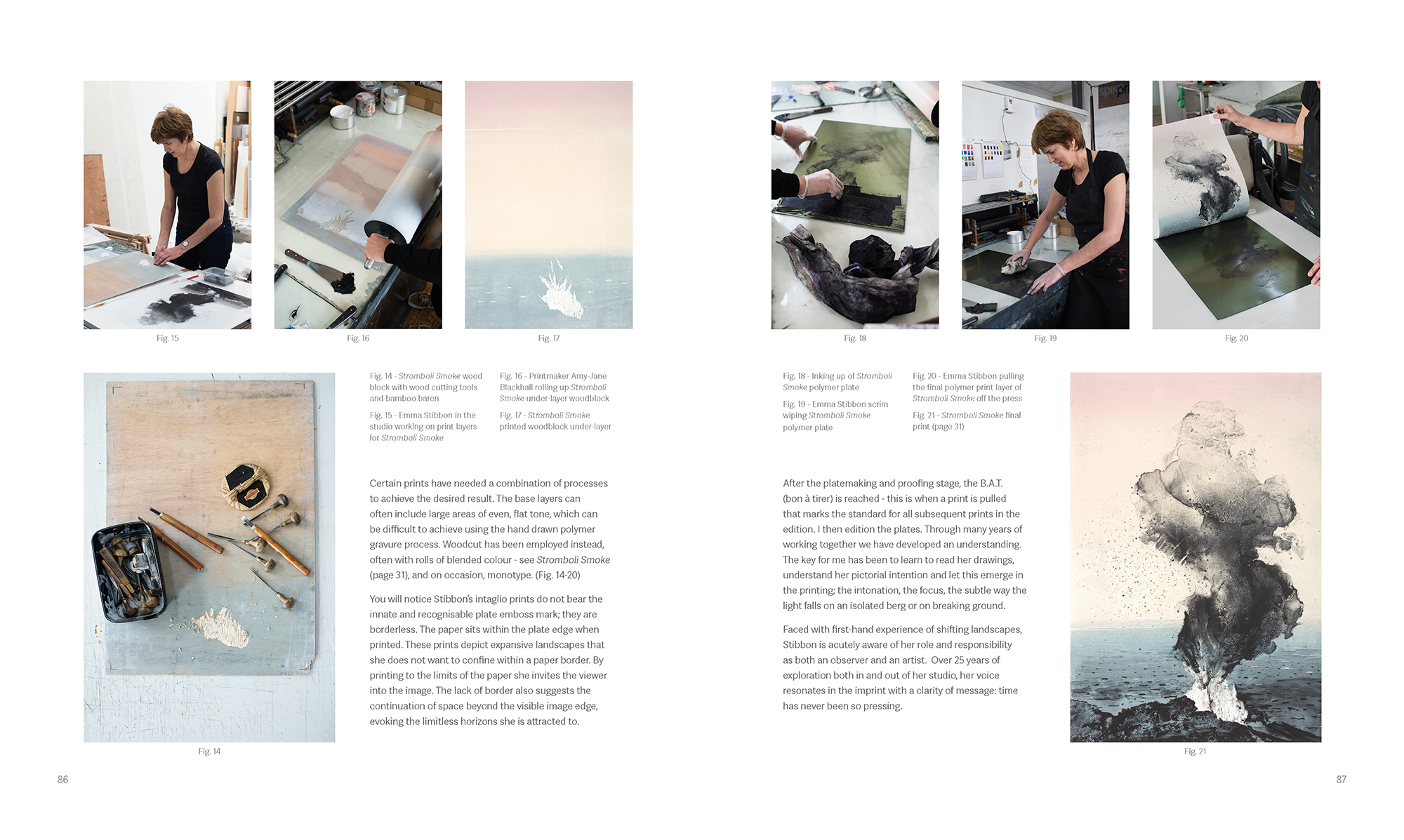
Through the alchemy of printmaking Stibbon envelopes us in her experiences in monumental woodcuts and tactile intaglio prints where volcanic ash is crusted into the printing plate.
In the ‘Studio’ section of ‘Territories of Print’ Printmaking, Amy -Jane Blackhall, is Stibbon’s collaborator on the ink bench and beautifully documents the artist’s process and making of the prints.
Stibbon is not intimidated by scale. She finds it allows for exploration into the construction of an image and is the best way to communicate to the viewer the experience of a place….. Drawing is at the root of Stibbon’s printmaking and, in recent years, she has found the photopolymer gravure process most faithful to her way of working. Essentially, each print she makes using this technique begins as a drawing, or ‘positive’. This is made on to a clear grain resist film, in the same vernacular as she makes a drawing on paper, manipulating a combination of Indian ink and found material. AJB, TOP, Studio, p83
About Emma Stibbon RA
Emma Stibbon is a British artist living and working in Bristol, UK. She was born in 1962 in Münster, Germany. Stibbon’s early career included a training and practice as a paper conservator. She studied Fine Art BA (Hons) at Goldsmiths, London and Research Fine Art MA at the University of the West of England. In 2018 she was awarded an Honorary Doctor of Letters by University of Bristol for her contribution to the arts.
Gathering research, Emma Stibbon often works for extended periods of time in the landscapes and places of interest to her. In 2010 Stibbon was awarded the Derek Hill Scholarship at the British School at Rome. Other projects include the Stiftung Federkiel residency at the Spinnerei, Leipzig, and the 4th International Gyumri Biennale, Armenia.
In 2013 Stibbon was part of the Arctic Circle expedition to Svalbard in the High Arctic, supported by Grants for the Arts, UK., and was chosen for the Artist Placement in Antarctica, organised by the Friends of the Scott Polar Research Institute. In 2019 she was awarded the Queen Sonja of Norway Print Award, Svalbard, High Arctic.
Numerous artist-in-residence opportunities in the USA have informed her recent projects including, in 2016 the Josef and Anni Albers Foundation, Connecticut; Hawai’i Volcanoes National Park; Death Valley National Park and Grand Canyon National Park, Arizona.
Stibbon’s work is held in private and public collections including UK: The Victoria & Albert Museum, London; Bristol City Museum and Art Gallery; Russell-Cotes Art Gallery and Museum, Bournemouth; Pallant House Gallery, Chichester; University of Chichester Collection; Fitzwilliam Museum, Cambridge, New Hall Art Collection & Murray Edwards College, Cambridge, Scott Polar Research Institute, University of Cambridge, Laing Art Gallery, Newcastle on Tyne, New Art Gallery, Walsall. USA: San Diego University Collection, Germany: Céline & Heiner Bastian, Potsdam Museum, Berlin; Stadtmuseum, Berlin.
Emma Stibbon was elected Royal Academician in 2013.
Rabley News
2025 | December Newsletter
As the days shorten we are celebrating winter with a warm glow, highlighting our December Collection by Nana Shiomi and Lucy Farley.
Dec
London Art Fair
21–25 Jan 2026, Rabley Gallery returns to the London Art Fair in January taking you further into the forest with original works by Sarah Gillespie, Katherine Jones RA, Eileen Cooper RA, Lucy Farley and Natasha Michaels.
Dec

